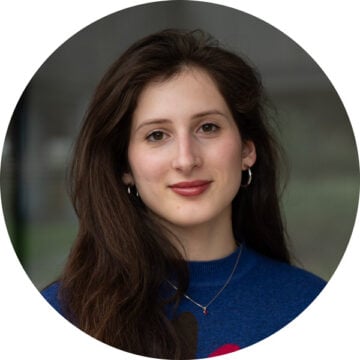Venue : Centre Broca
 Laetitia Bettarel
Laetitia Bettarel
Team Quantitative imaging of the cell
IINS
Title
In-depth Single Molecule Localization Microscopy using adaptive optics and PSF engineering
Abstract
Assessing protein organization and dynamics in their native cellular context provides key insights into the molecular mechanisms that govern cell function. Super-resolution microscopy has been a major breakthrough in this regard, driving major discoveries in cell, developmental and neuro- biology. Amongst these techniques, Single Molecule Localization Microscopy (SMLM) enables locating, tracking and counting biomolecules in their cellular environment with nanoscale resolution. However, conventional SMLM imaging is restricted by its shallow penetration depth, precluding many biological events to be investigated. Performing volumetric SMLM deep within complex multicellular samples therefore poses several challenges: achieving efficient optical sectioning with high photon collection capabilities, and correcting the optical aberrations introduced both by the optical system and the sample, which blur the single molecule signals and compromise localization precision and accuracy.
To address these challenges, we developed in the team a specific light-sheet architecture, named soSPIM, which enables in-depth single-molecule imaging and supports the culture and observation of complex 3D cellular models. In parallel, Adaptive Optics (AO) has emerged as a powerful solution to correct system- and sample-induced aberrations and thereby improve image quality in-depth. Recently, we combined soSPIM with AO to achieve volumetric 3D SMLM imaging at the whole cell scale. Yet, this implementation still relies on fiducial markers located close to the sample, which prevents the effective correction of sample-induced aberrations, that become especially significant within multicellular systems. In addition, it uses conventional 3D localization approaches, that are non-optimal for fast and accurate in-depth single molecule localization.
In this context, my PhD work focused on developing methodological solutions to extend the applicability of the AO-soSPIM imaging platform for in depth SMLM in complex 3D samples. First, I developed a fully custom Python-based sensorless AO correction algorithm allowing complete control over all parameters of the correction loop, including the integration of user-defined image quality metric specifically tailored to the imaging modality and sample type. Building on this, I established a systematic framework to assess fiducial-free image-based metrics and identify those most sensitive and robust under in-depth SMLM experimental conditions. Together, these developments provide a versatile and reliable foundation for restoring diffraction-limited performance in photon-limited SMLM acquisitions.
Second, I investigated deep learning-based single molecule localization frameworks that exploit data-driven PSF models to enhance both localization robustness and imaging speed, offering a promising alternative to conventional Gaussian fitting in dense or challenging 3D SMLM datasets. I also explored experimental PSF modeling strategies to better account for residual aberrations and complex PSF deformations in depth. These approaches, which capture PSF shapes beyond the Gaussian approximation, aims to improve localization precision and accuracy under aberrated conditions.
Altogether, these methodological developments establish a robust pipeline for aberration-corrected, high-resolution 3D SMLM within complex biological 3D samples. By enabling reliable volumetric SMLM imaging beyond the coverslip, this work broadens the scope of super-resolution imaging toward physiologically relevant 3D models such as spheroids and organoids.
Publication
Cabillic, M., Forriere, H., Bettarel, L. et al., In-depth single molecule localization microscopy using adaptive optics and single objective light-sheet microscopy. Nat Commun 16, 8362 (2025). https://doi.org/10.1038/s41467-025-62198-8.
Jury
– Rémi GALLAND : Directeur de thèse
– Laurent COGNET: Examinateur
– Alexandra FRAGOLA: Rapporteuse
– Lydia DANGLOT: Rapporteuse
– Jean-Baptiste SIBARITA: Invité

